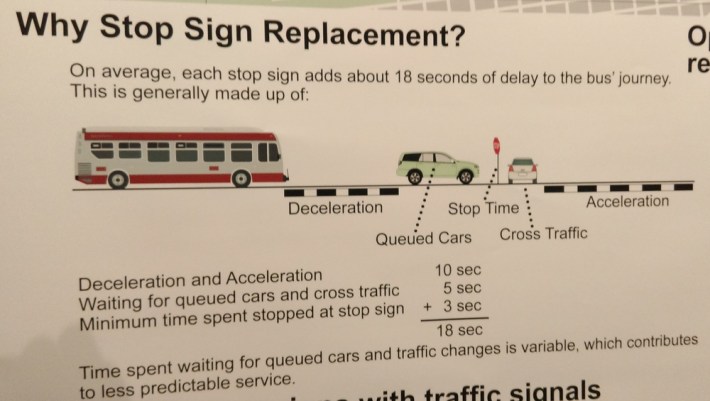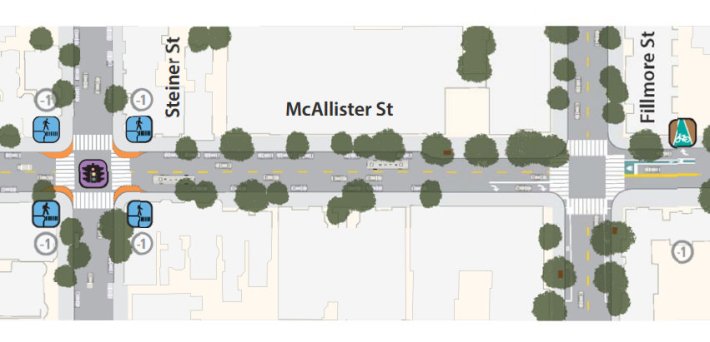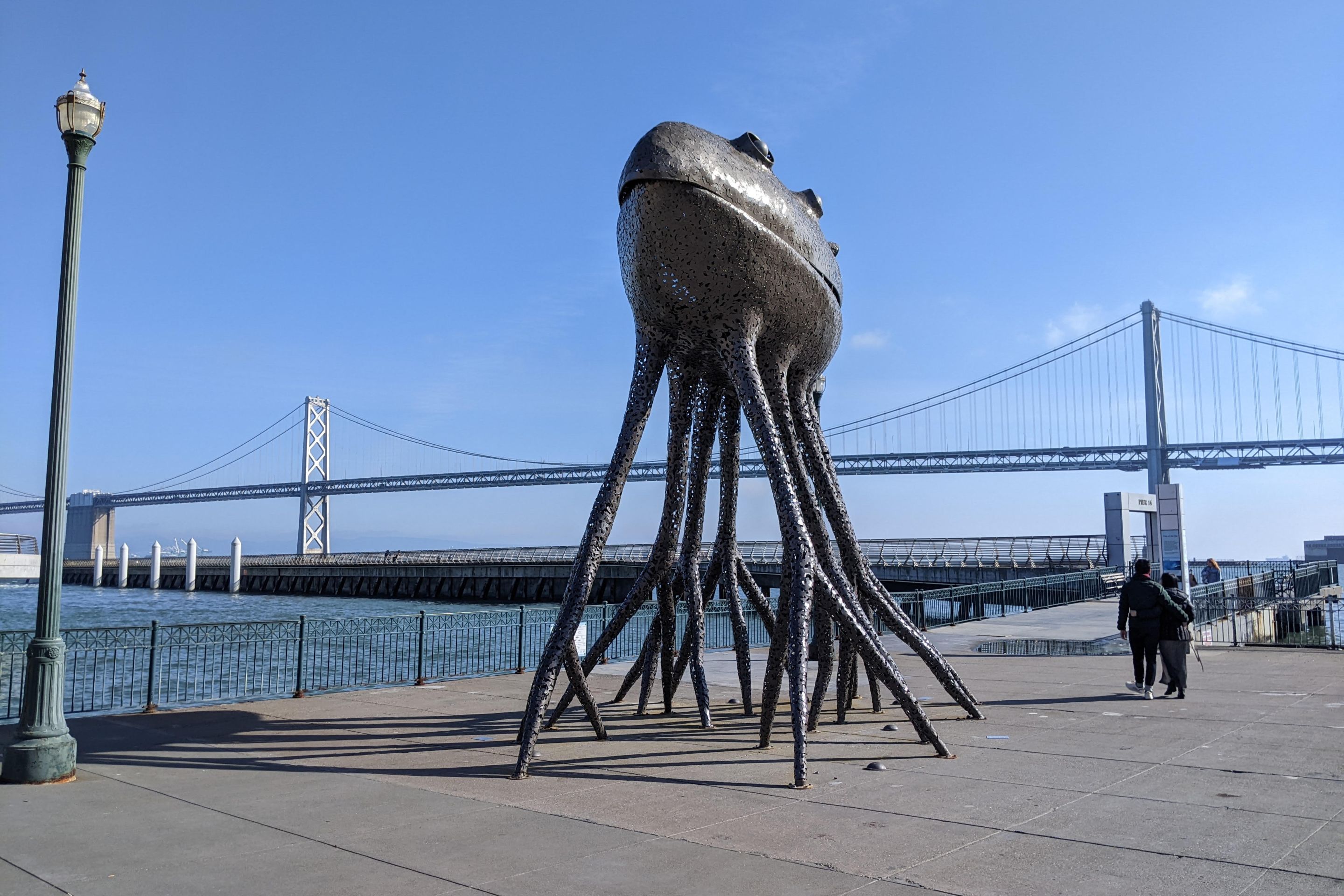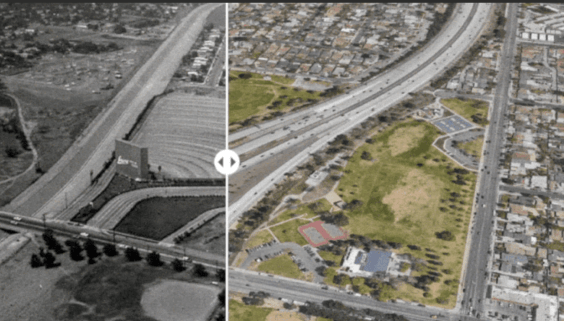
The latest of SFMTA's efforts to speed up Muni lines to run into some neighborhood opposition involves its proposed replacement of stop signs with transit-priority traffic signals. Some Western Addition neighbors have protested a proposal to signalize five intersections on McAllister Street to speed up the 5-Fulton, one of the designated "Rapid" routes receiving upgrades under the Muni Forward program (also known as the Transit Effectiveness Project).
Initially, the complaints were driven by fears that signals would bring dangerous speeding to McAllister. Muni planners responded by holding more outreach meetings, and presented data showing that pedestrian injuries declined on similar streets after signals were added. They also say speeds won't go up significantly, since signals will be synchronized for speeds below 20 mph.
A September hearing on the transit-priority signal plans for McAllister and Haight Street drew strong opposition from neighbors, leading the SFMTA to postpone the plans' approval and drop a signal . D5 Supervisor London Breed asked the SFMTA to do the extra outreach, but is cautiously supportive of the agency's efforts, said aide Conor Johnston.
"When it comes to transportation, her priority first and foremost is improving transit," he said. "The only thing that trumps that is public safety." Johnston said the data on injury reductions were "helpful, but not a complete answer."

After an SFMTA study of 12 intersections that were signalized, "We found that the total traffic related pedestrian collisions at these intersections decreased from 30 to 8, indicating a safer pedestrian environment," states a flyer [PDF] handed out at a packed community outreach meeting on Wednesday. As for concerns about drivers accelerating to beat yellow lights, SFMTA planners say they haven't observed that behavior.
Sean Kennedy, the SFMTA's Muni Forward program manager, said the data seems to quelled some neighbors' fears, but that the complaints have shifted. "What we hear is that there's a lot of concern over the neighborhood feel," he said. "And that's something we can't really dispute with facts. It's an individual preference if people do or don't like signals."
Natalie Burdick of Walk SF told Streetsblog in September that the Muni proposals “should not conflict with the SFMTA’s own stated priority for ensuring the safety of the city’s road users." She noted that “signalized intersections can support safer walking environments, if they are designed effectively. For instance, signals can be timed to calm traffic with lower speeds, and provide regular phases for pedestrian crossings."
The SFMTA's broader plans for the 5 and other priority transit corridors include transit bulb-outs (a.k.a. sidewalk extensions) to provide roomier bus stops and improve safety by slowing cars at intersections, more visibly-marked "ladder" crosswalks, and some left-turn restrictions.

Along the 5, the SFMTA predicts that transit-priority signals, which stay green when a bus approaches, will save 1.5 minutes alone in each direction. An additional six minutes will be saved by speeding up boarding through bus bulb-outs, removing or relocating some stops, and adding right-turn lanes to keep turning cars out of the way.
Some of those improvements have already been made since the SFMTA made initial upgrades to launch the 5L-Fulton Limited service, which runs about 17 percent faster than the 5-local. The SFMTA says the 5L has attracted about 1,900 new daily riders (initially reported as 2,000), though some riders may have switched from other routes.
Bob Esfandiari, a 5-Fulton rider who lives at the west end of the line on La Playa Avenue, said he's excited for a speedier commute.
"People are apprehensive, and I understand that," he said. "But my commute right now is 55-ish minutes, and I definitely feel the slowdown once the bus turns on to McAllister. The bus is stuck behind cars, stuck at stop signs."
Esfandiari also pointed out that the community meetings seem heavily attended by neighbors from the immediate area, but that Muni riders who travel through don't seem to be heard from as much.
"I'm pretty sure anyone who lives past 30th Avenue would appreciate" the improvements, he said. "I probably should get the word out to my neighbors."





